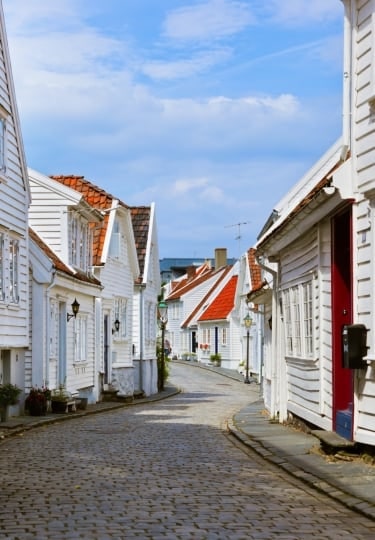On the southwest fringes of Scandinavia’s glorious fjord region, Stavanger is a beautiful destination that offers the perfect blend of culture, nature, gastronomy, and history.
An oil-rich city that’s home to an attractive old town, Stavanger also boasts some of Norway’s best adventures right on its doorstep, including the famous hike to Preikestolen, also known as Pulpit Rock, a towering cliff that rises almost 2,000 feet above the calmness of the Lysefjorden.
There’s plenty to do and see in and near this slither of Norway’s craggy west coast, from exploring the region’s soul-soothing beaches to tackling life-affirming mountain hikes and learning about the city’s maritime heritage.
Here’s everything you need to know about visiting Stavanger, Norway.
Why Visit Stavanger, Norway
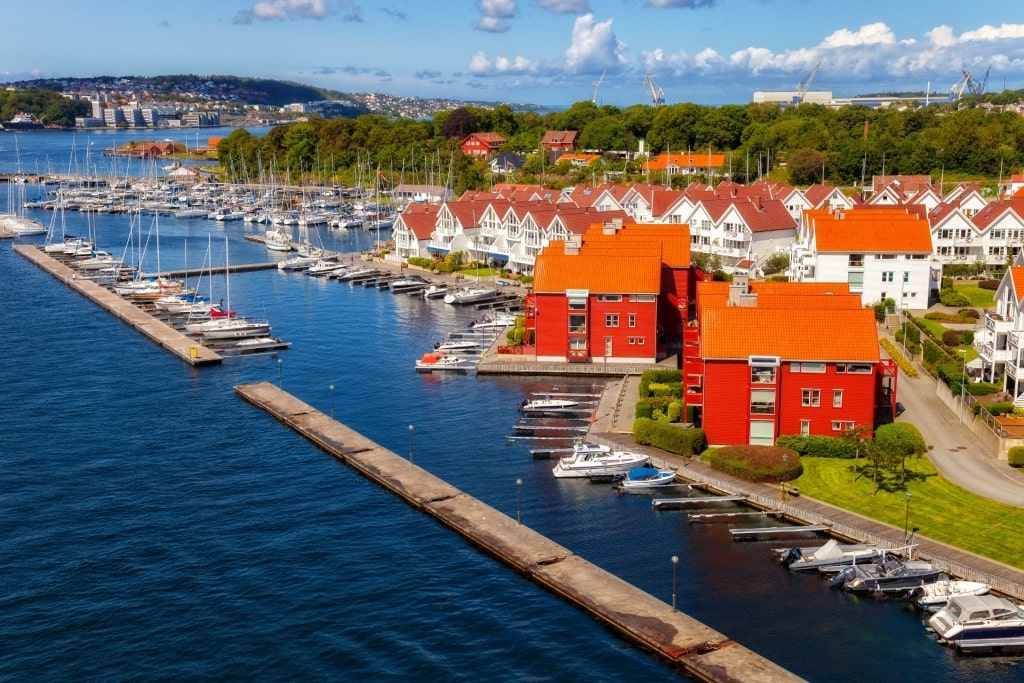
Stavanger
Stavanger is one of those picture-perfect destinations that has it all. This walkable city is filled with pretty streetscapes, interactive museums and experiences, and top-notch Nordic gastronomy.
Stavanger might be one of the oldest cities in Norway, but it has a modern side, too. Among its preserved old wooden houses, visitors will find vibrant street art, which can be seen through a walking tour of the city.
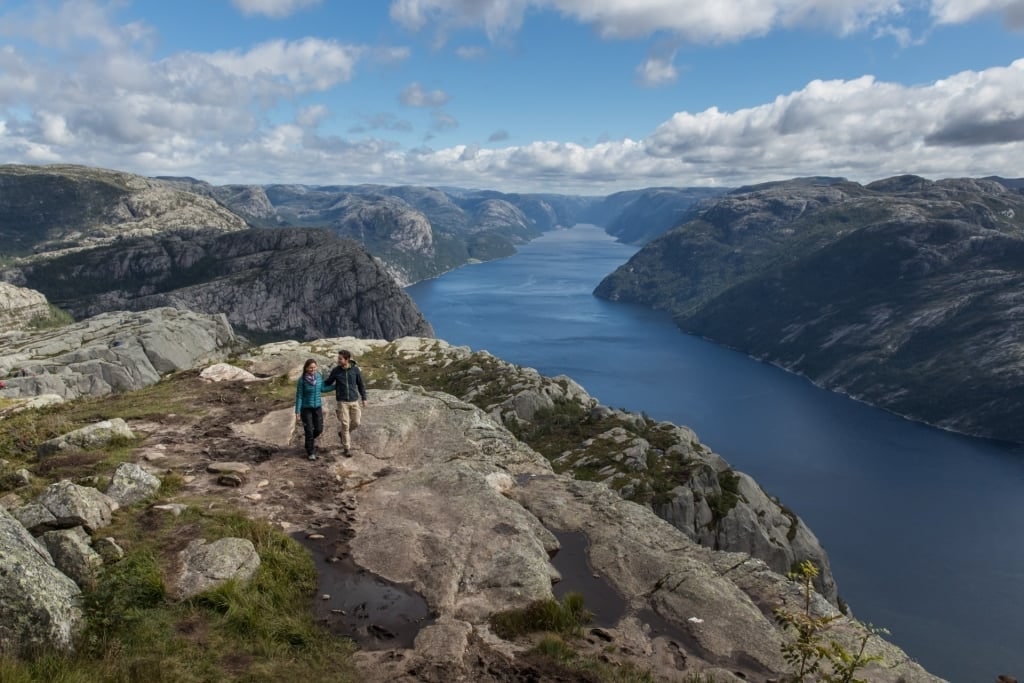
Preikestolen/Pulpit Rock
While there’s plenty to do in Stavanger, it’s also a perfect base for exploring Norway’s nature.
The wild west coast’s beaches are just a short, 30-minute drive from the city.
The extraordinary views from Pulpit Rock and the quietude of Lysefjord—both of which are known as some of the most beautiful places in Norway—can be experienced via an effortless drive, a thrilling RIB ride, or a hike.
History & Culture
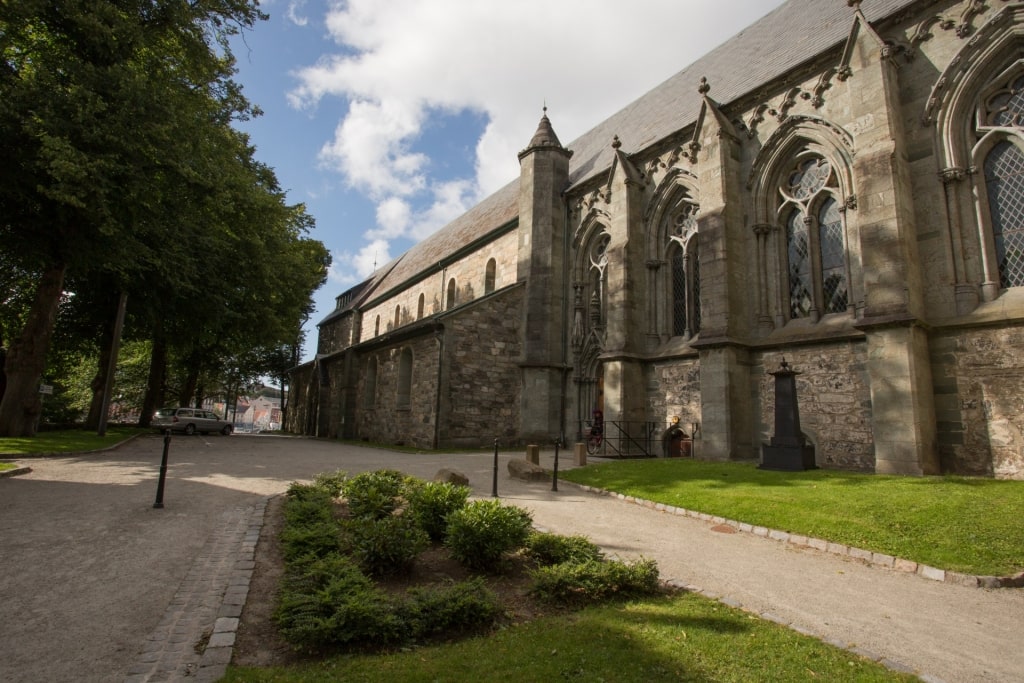
Stavanger Cathedral
Founded in 1125, the same year Stavanger Cathedral—Norway’s oldest cathedral—was completed, Stavanger is one of the oldest cities in Norway.
This scenic region of Norway was thought to be home to a Viking stronghold and a military and trading center centuries before it was first crowned a city.
In the late 9th century, the Battle of Hafrsfjord took place in and around Stavanger, resulting in the unification of Norway and crowning of the first king of Norway.
There’s a striking monument in Hafrsfjord on the Stavanger Peninsula, called Sverd i fjell (Swords in Rock), featuring three gigantic bronze swords to commemorate the ferocious 872 Viking battle.

Norwegian Canning Museum Photo by Chris Walsh on Flickr, licensed under CC BY 2.0
Thanks to the bounty of the North Sea, the fishing industry dominated trade in Stavanger for centuries, particularly the manufacturing of canned fish, which can be explored at the Norwegian Canning Museum.
At one point, 72 percent of Stavanger’s workforce was employed by the canning industry, with fish such as herring preserved, canned, and shipped from the Scandinavian city to the rest of the world.
In 1969, when Norway discovered oil in the North Sea, Stavanger turned into a boomtown and oil replaced fish canning as the city’s major industry and source of employment. Stavanger is even known as Norway’s Oil Capital.
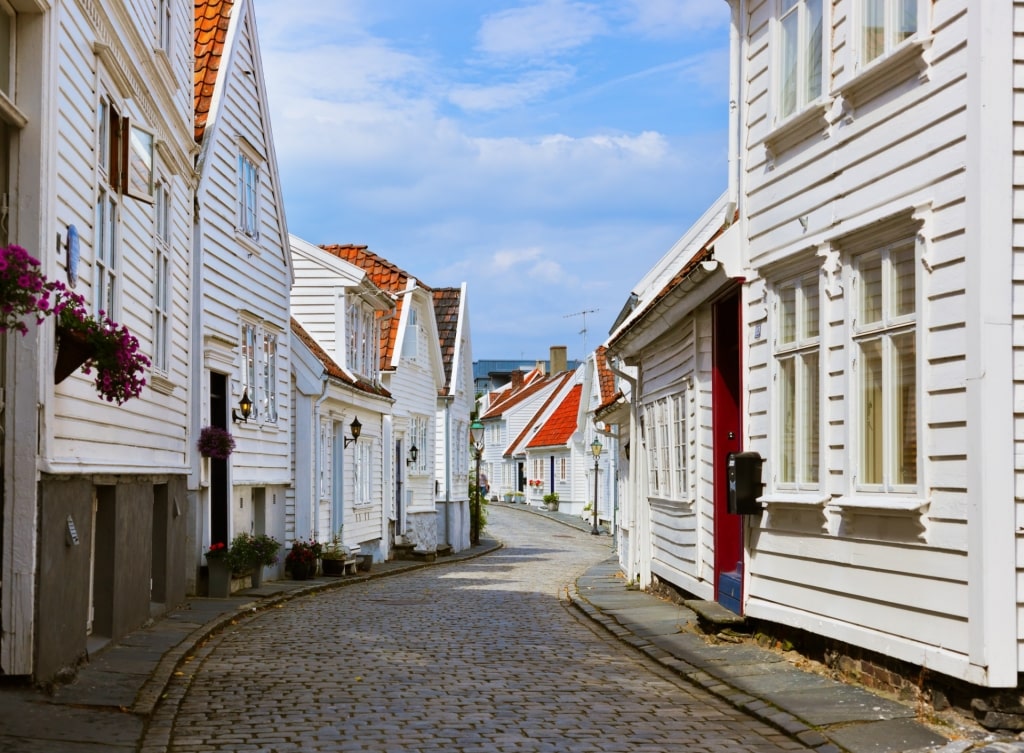
Gamle Stavanger
Stavanger’s photogenic Gamle neighborhood by the waterfront was built up over the 18th and 19th centuries. Little has changed about Gamle’s pretty cobbled streets, lined with protected chalk-white clapboard houses, which feel like an open-air museum.
Stavanger is home to a broad selection of museums that depict different periods of the city and wider region’s history, from a virtual reality Viking experience at Viking House to an explanation of the oil industry at the Norwegian Petroleum Museum.
Wildlife & Nature
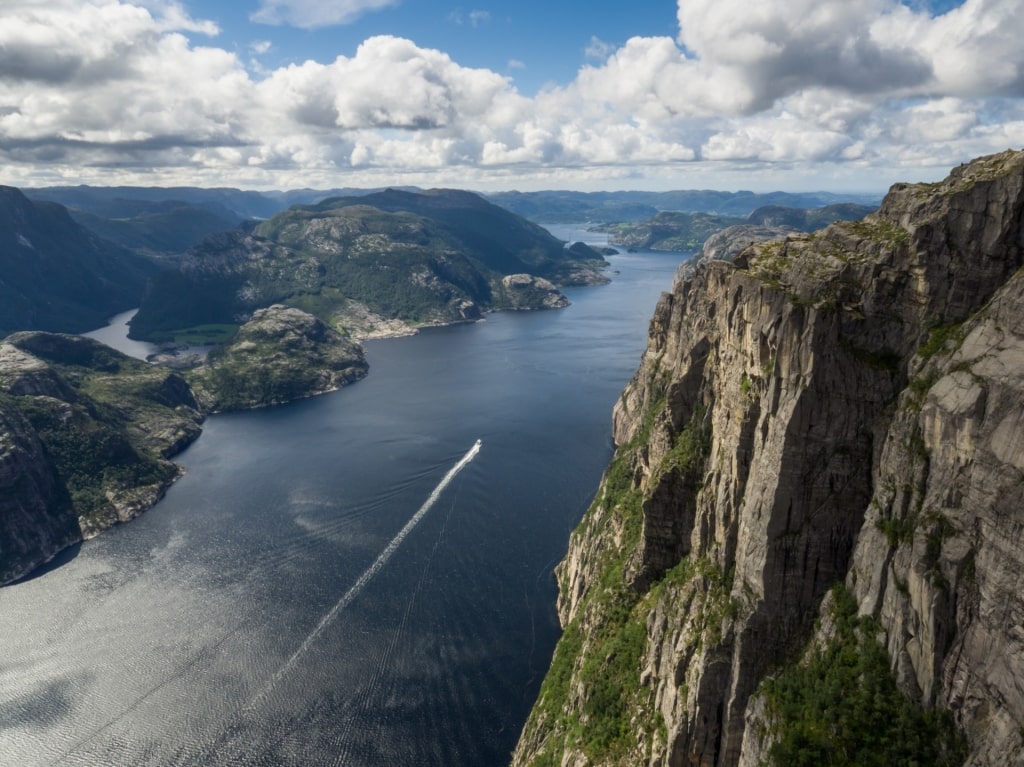
Lysefjord
Travel just a short distance from the center of Stavanger and you’ll be met with scenes of forest-covered mountains, silent fjords, thundering waterfalls, and some of the best beaches in Norway.
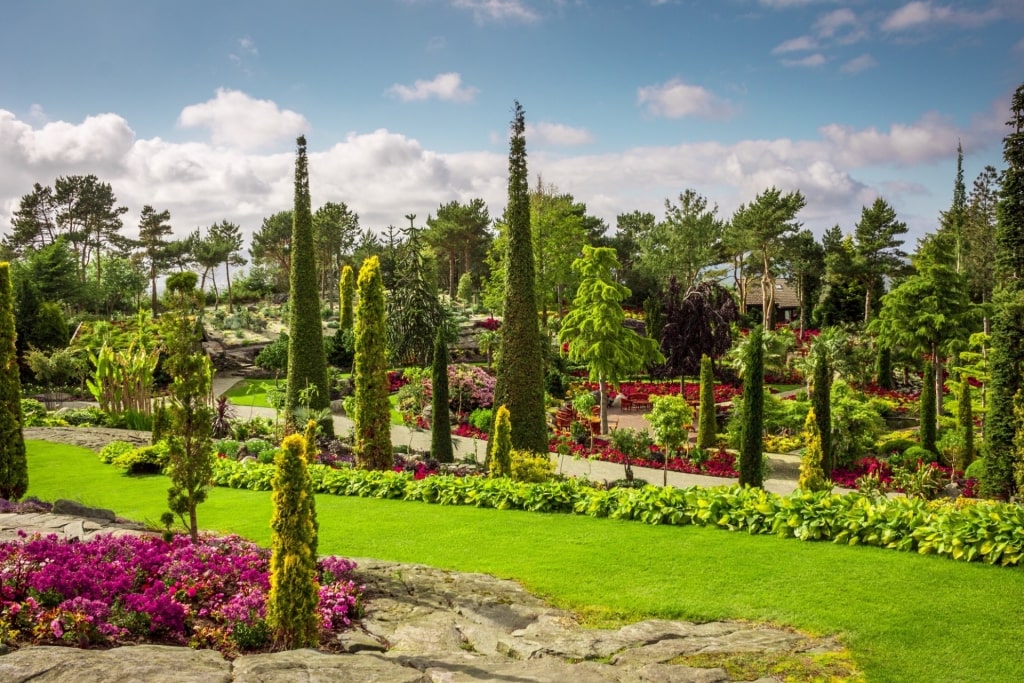
Flor and Fjære Garden
You’ll even find tropical palm, bamboo, and banana trees on a tucked-away island on the Gandsfjord. Flor and Fjære Garden is home to a series of manmade tropical grounds on the island of Sør-Hidle, just outside of Stavanger, with two tours offered daily from May through September.
While Stavanger doesn’t offer the same fauna found in the Arctic region of Norway—it’s way too far south for reindeer or polar bears—the region’s sensational landscape still provides a wealth of wildlife to look out for.

Sea eagle
The creamy shores of Sola, Hellestø, and Bore lie within the Jærstrendene landscape conservation area, a protected wildlife reserve and one of the best places for bird watching in Norway. Look for sea eagles, sandwich terns, cormorants, gannets, warblers, and woodpeckers.
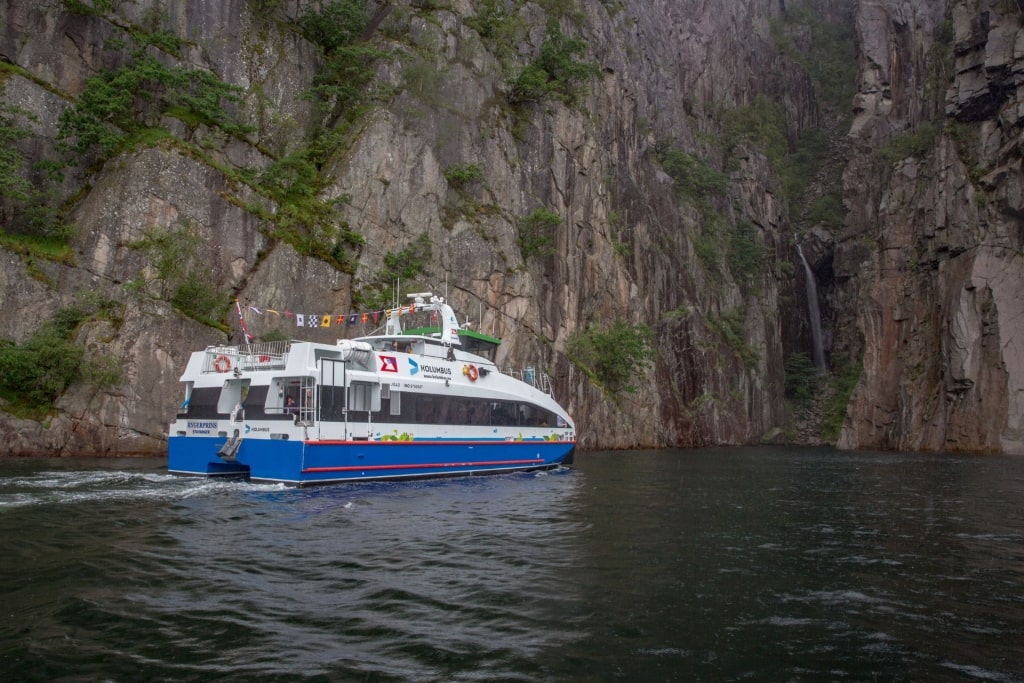
Lysefjord
Seals and porpoises love the bracing waters around the Stavanger peninsula and if you spend time kayaking, hiking, or boating around the majestic Lysefjord and you could witness more sea eagles swooping above tweed-colored hills.
Tips for Visiting Stavanger
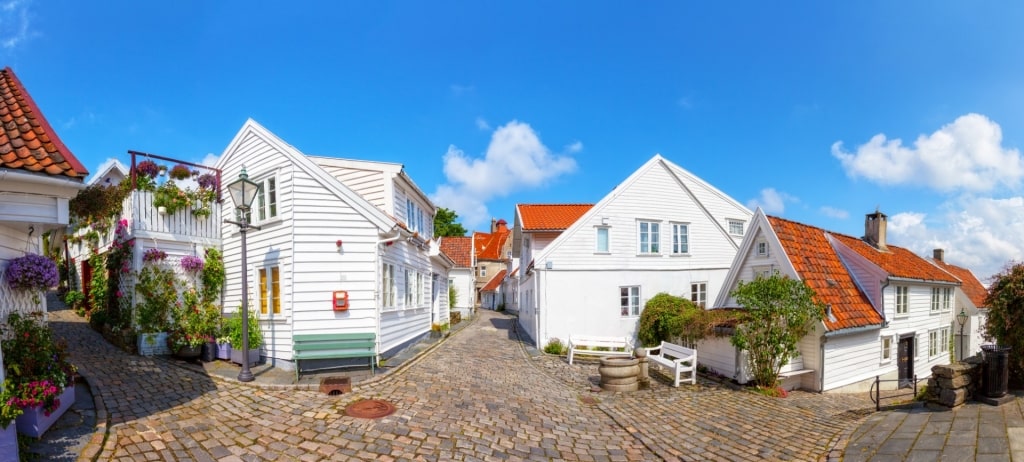
Gamle Stavanger
One of the many brilliant things about Stavanger is its walkability. You can visit all of the central attractions on foot. Begin a walking tour by the waterfront to take in Stavanger’s old town, art galleries and museums, and the fish market.
Stavanger’s local bus service is operated by Kolumbus, covering routes in the Stavanger and Sandnes areas, including the wind-beaten Jærstrendene beaches.
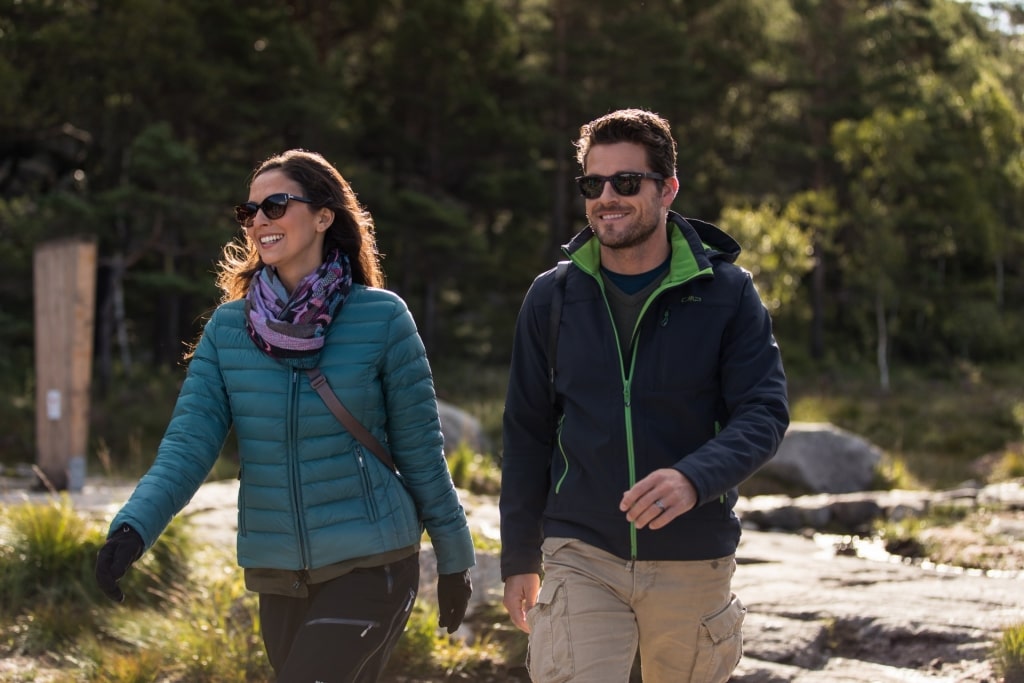
Stavanger
The weather can be changeable in Stavanger. You might experience a warm and sunny day followed by rain showers and cloud cover that’s rolled in from the North Sea the next. Pack layers and a light waterproof jacket. Pack your sunglasses, too. The sun sets around 11 p.m. during summer in this part of Norway.
The local currency is the Norwegian krone (NOK), though most local shops and restaurants will accept credit cards.
Things to Do & Attractions in Stavanger
Stroll Around Stavanger’s Waterfront Neighborhoods
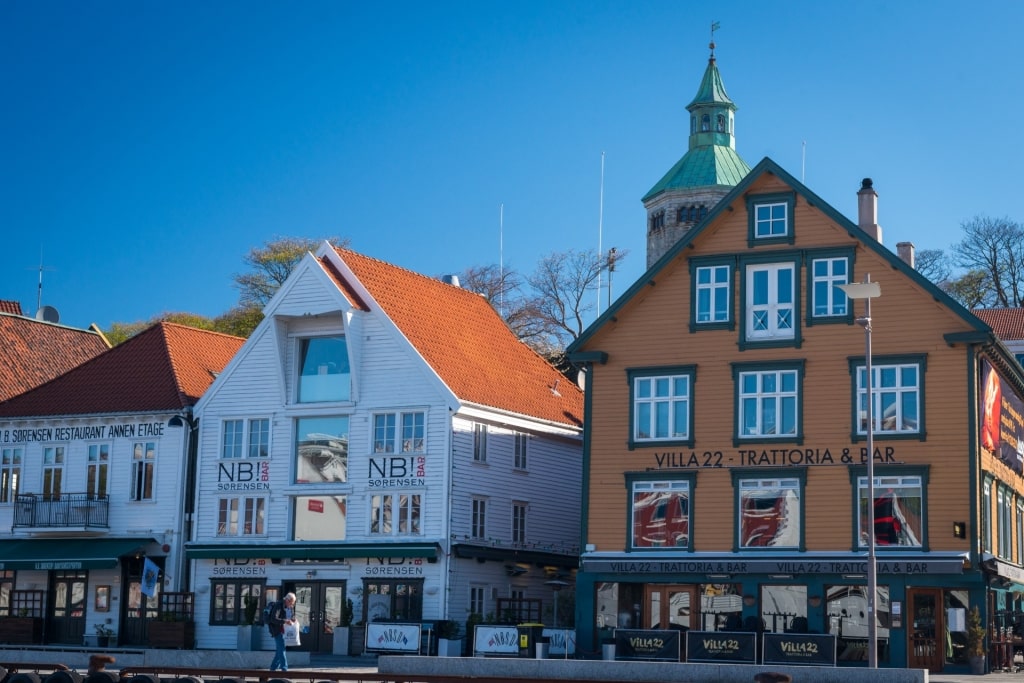
Gamle Stavanger
Step back in time on a stroll around Old Stavanger, also known as Gamle Stavanger, by the waterfront. Gamle Stavanger is made up of 173 immaculate wooden houses constructed around the turn of the 18th century and located on the west side of the harbor.
You’ll know you’ve arrived in the right neighborhood by the neat rows of white timber buildings, cobblestone laneways, blooming window boxes, and tall, gas-lit lamps that grace the sidewalks.
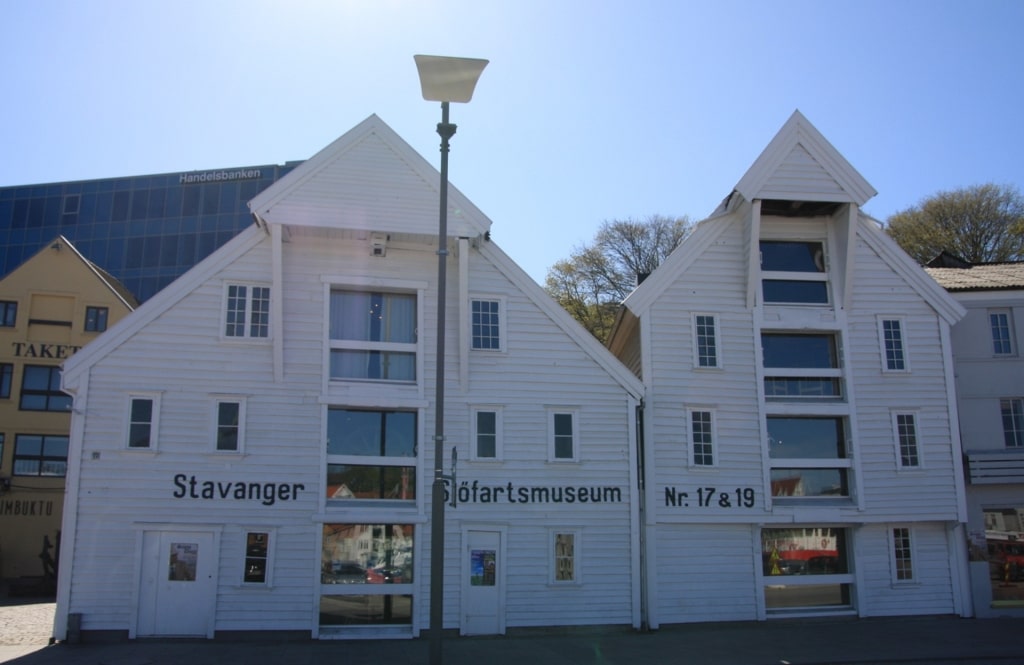
Stavanger Maritime Museum Photo by Jarvin Jarle Vines on Wikimedia Commons, licensed under CC BY-SA 3.0
This quaint quarter is also home to the fascinating Norwegian Canning Museum, Stavanger Maritime Museum, and a fun Viking virtual reality experience at Viking House. You’ll also find the odd independent gallery, boutique shop, and bookstore in this delightful neighborhood.
Once you’ve explored Gamle Stavanger, loop around the waterfront, passing the medieval cathedral to the pedestrianized Øvre Holmegate.
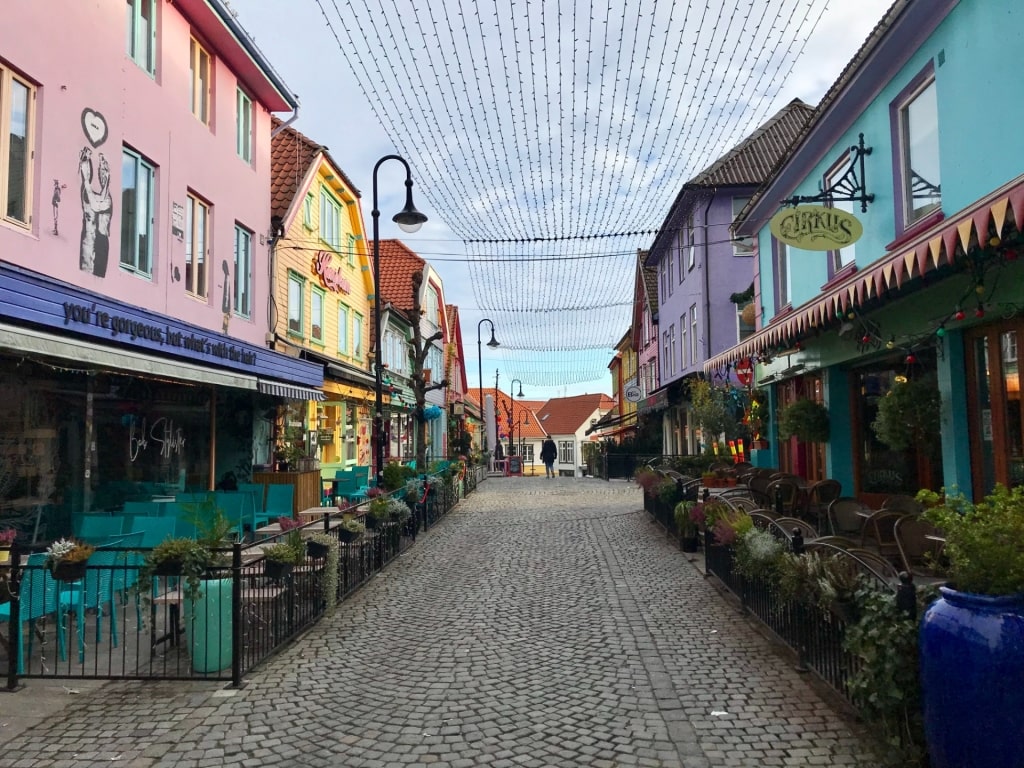
Øvre Holmegate Photo by Vogler on Wikimedia Commons, licensed under CC BY-SA 4.0
Øvre Holmegate—known as Fargegata (the street of colors) by locals—is on the touristy side, but it’s worth seeing for its burst of rainbow-colored buildings and rows of cafes, restaurants, and shops.
Hike Stavanger’s Famous Trails
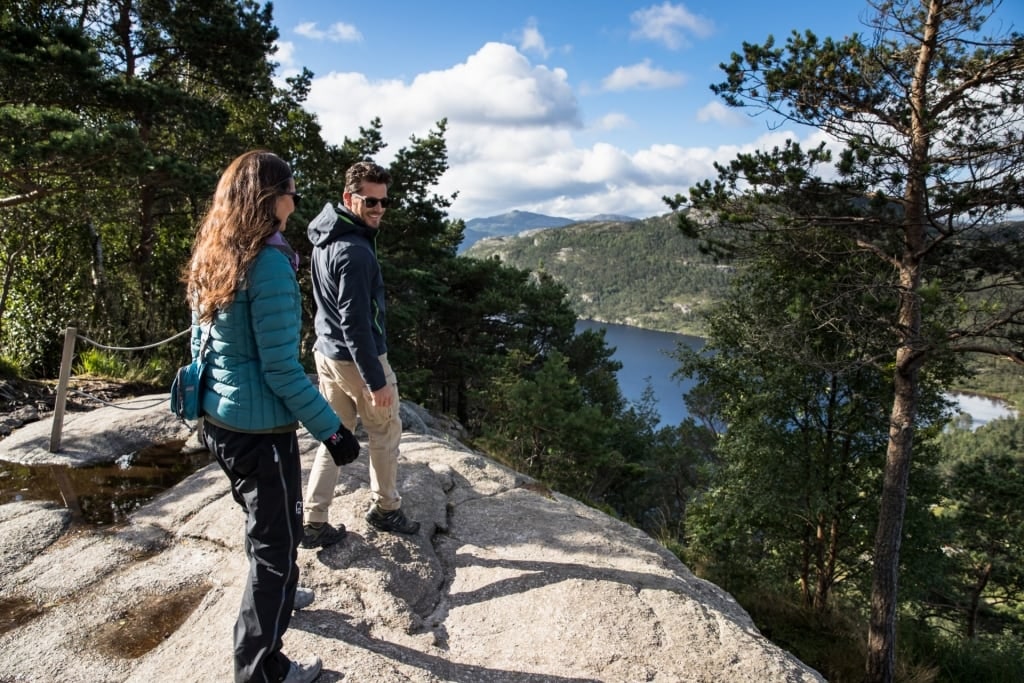
Preikestolen/Pulpit Rock
One of the best things about visiting Stavanger is the access it offers to some of the best hikes in Norway.
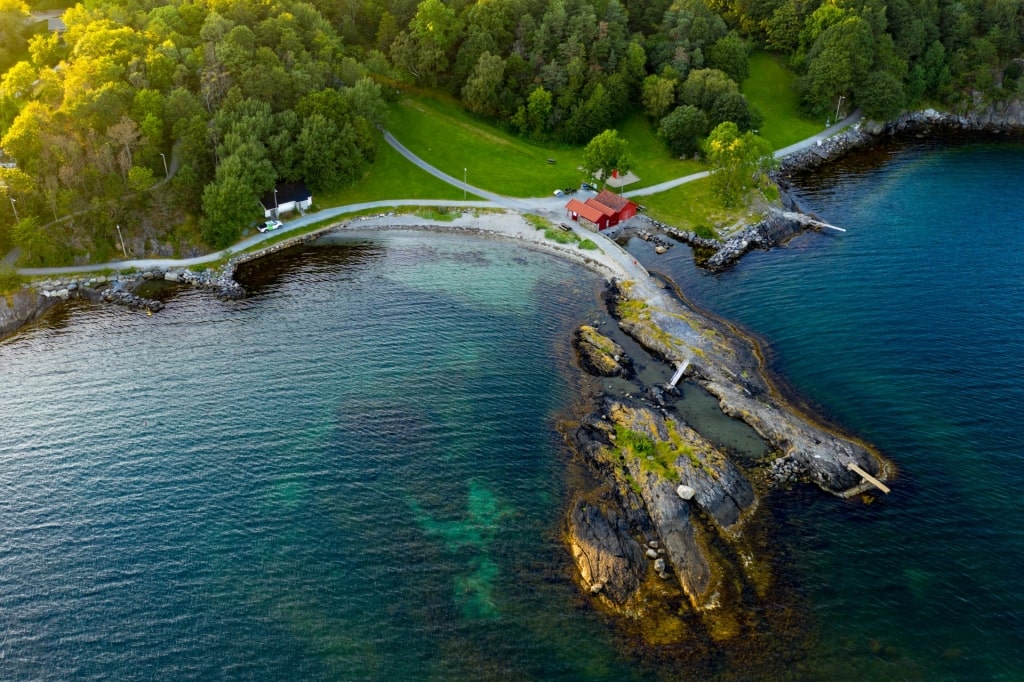
Godalen Beach
For an urban-coastal hike, head southeast of Stavanger, toward Gandsfjord, via Emmausbukta to Goddalen. This easy hike traces the coastline as you wander toward the serene Godalen Beach. You could even enjoy a refreshing fjord swim when you arrive.
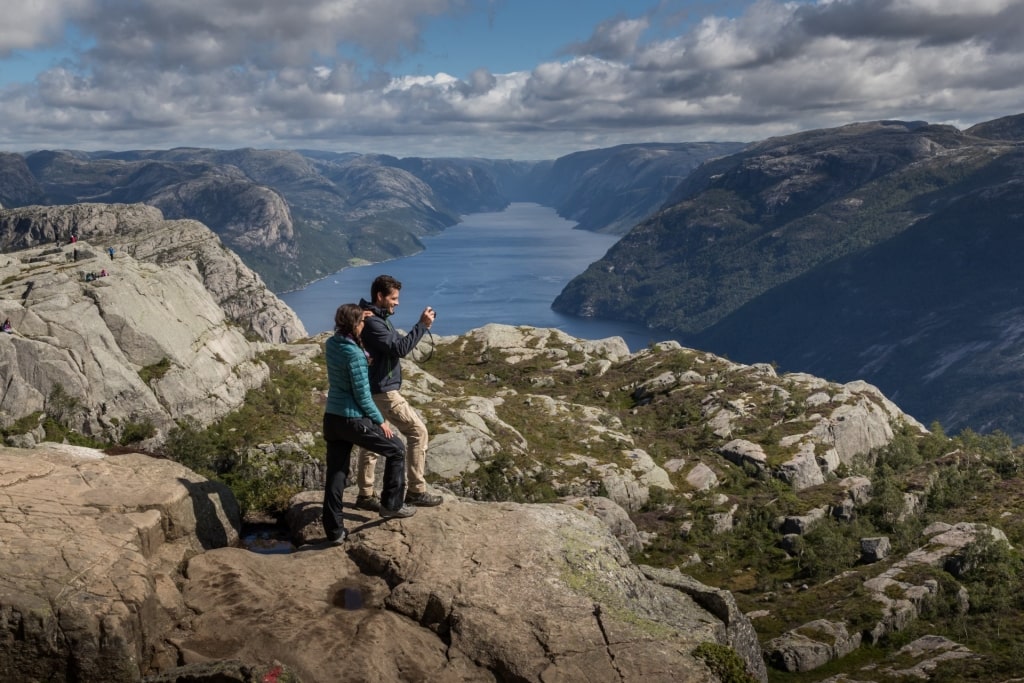
Preikestolen/Pulpit Rock
Set your pulse racing on one of the most famous hikes in Norway to the mighty Preikestolen, a huge rock formation towering above the tranquil Lysefjord. Preikestolen draws hikers and outdoor enthusiasts from around the world for its captivating views—and the fact that there’s no safety fence on the edge, making this the ultimate spot for a photo shoot. The starting point can be reached from Stavanger in just 40 minutes.
Tours are offered daily between April and October, with guides taking groups on an almost four-mile trek, starting at Preikestolen Fjellstue mountain lodge. The route is fairly demanding and takes roughly four hours there and back.

Lysefjord
Breathe in some of Norway’s ultra-fresh air from the top as you take in the heart-stopping vistas of razor-sharp peaks and the glistening Lysefjord. Some tours even combine a hike to Preikestolen with a boat trip on the Lysefjord.
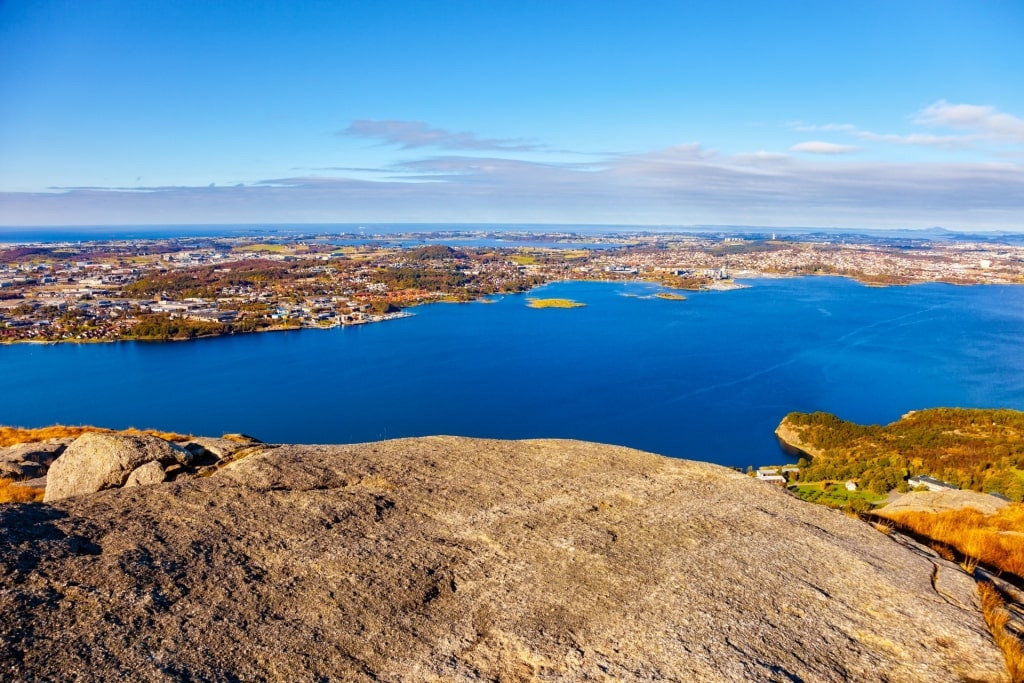
Dalsnuten
Another popular hike is to Dalsnuten in Sandnes, on the east shore of Gandsfjorden, roughly a 30-minute drive from Stavanger. At just over 1,000 feet to the top, Dalsnuten is an exhilarating, but fairly easy hike achieved in a couple of hours. Your reward for reaching the top is far-reaching views of Stavanger, Sandnes, and the Gandsfjord.
Read: Best Things to Do in Norway
Visit an Iron Age Farm Near Hafrsfjord
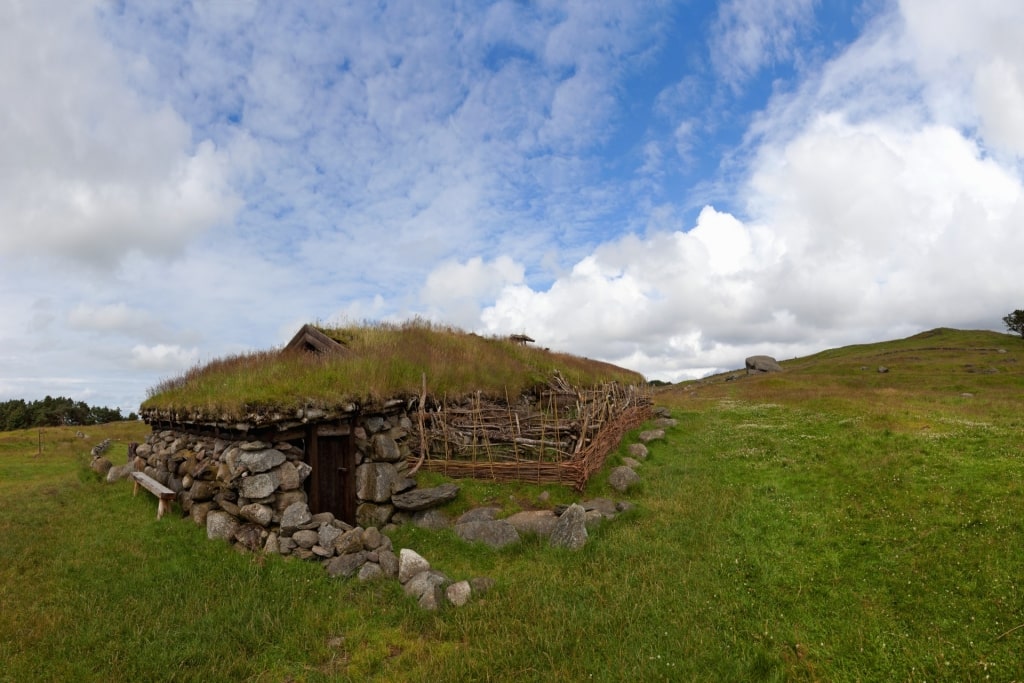
Iron Age Farm
Travelers curious about the region’s ancient history will find a trip to Stavanger’s family-friendly Iron Age Farm utterly enthralling.
Located on the southern edge of Stavanger in Ullandhaug, the Iron Age Farm is a reconstructed farmstead near the serene Hafrsfjord, built on the archaeological site of an original Migration Period (350-550 AD) farmstead.
The Iron Age Farm is the only one of its kind in Norway, featuring a roaring fire and three houses equipped with domestic items and utensils that would have been used during this period. Adding to the visual excitement of a trip to the Iron Age Farm, you’ll be met by characters dressed in replica period clothing, regaling visitors with tales around the crackling fire.
The life-like farmstead offers wonderful views of the nearby fjord and a café serving local dishes.
Discover Stavanger’s Superlative Art

Street art in Stavanger Photo by Fredrik Walløe on Flickr, licensed under CC BY-ND 2.0
Visitors to Stavanger are often surprised to discover that the underrated European city has one of the region’s best—and largest—collections of street art. Graffiti, murals, comic-style work, stencil art, and activism-led pieces can be seen scattered around the city and beyond.
On Skagenkaien, the city’s waterfront, witness a still-life painting by Spanish artist Ampparito. On Nygata, look out for the wall-painted mural of two children by artist Ernest Zacharevic, created to mirror the nearby sculpture by Svein Magnus Håvarstein.
Amid the traditional white houses of Nedstrandsgata, spot the colorful mural titled “Levitate” by Martin Whatson, painted on the side of a private home.
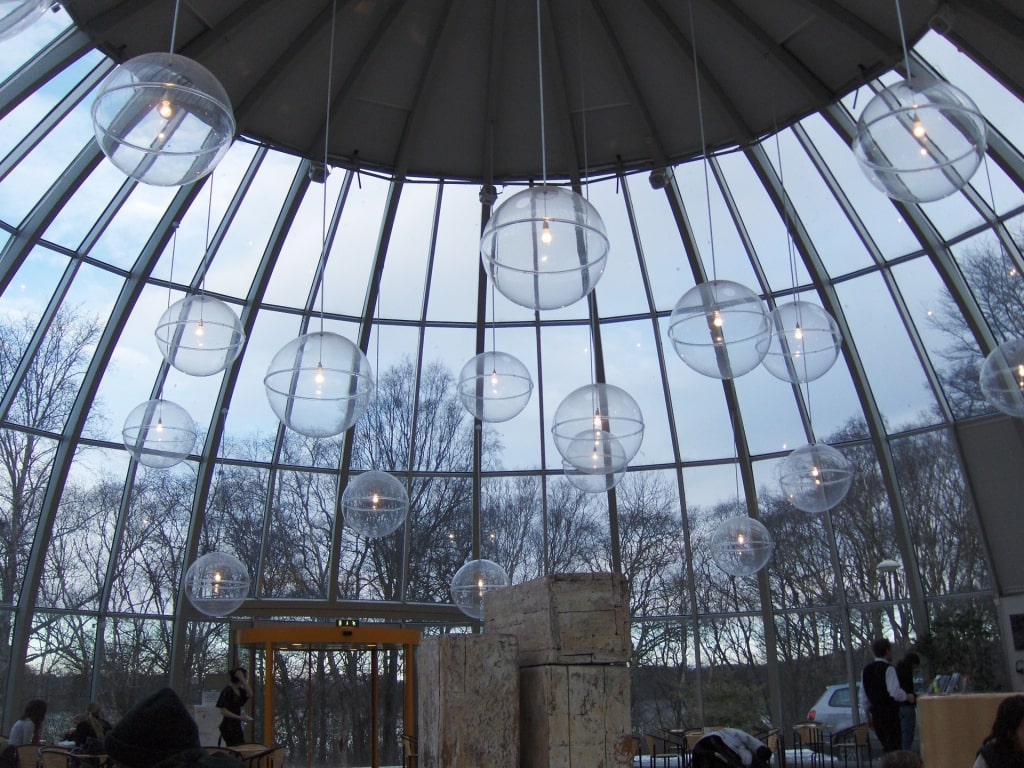
Stavanger Art Museum Photo by Kristian Kongsvoll on Wikimedia Commons, licensed under CC BY-SA 3.0
Wander or take a bus to Stavanger Art Museum to explore the wealth of Norwegian art on display at the permanent and temporary exhibitions. Browse the museum’s gift shop, located next to the café—housed in a modern glass-domed section of the building—for locally-crafted souvenirs such as contemporary ceramics, books, and trinkets.
Uncover Beautiful Beaches
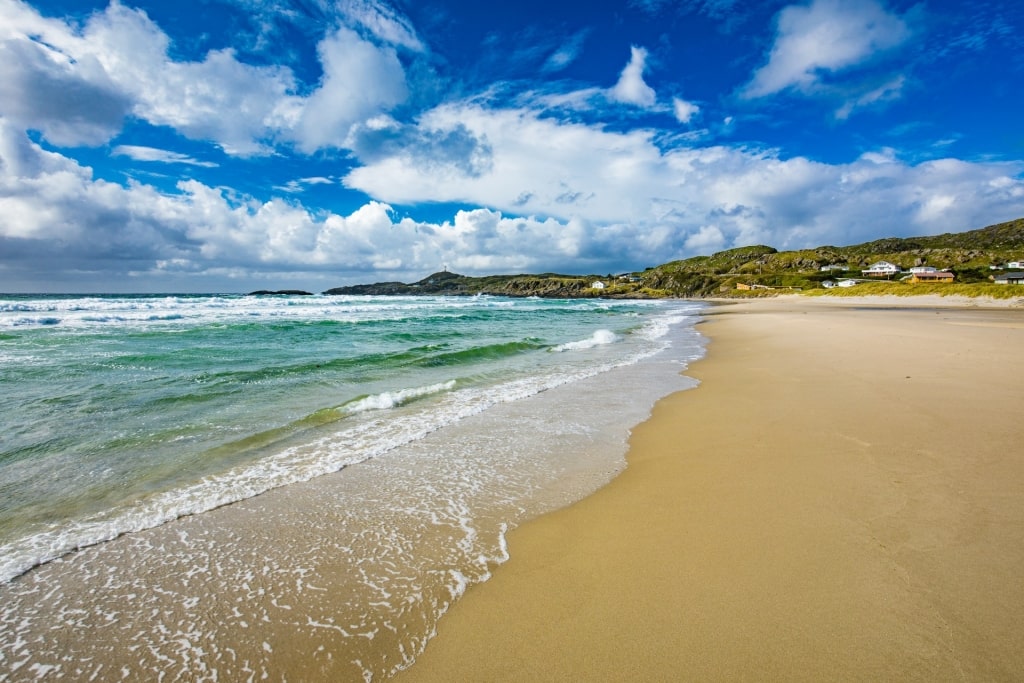
Hellestø Beach
Join locals in the know on the remote and wild Jæren beaches, over 15 miles of unsung shores just a short bus ride from the center of Stavanger.
The pearly-white beaches of Sola, Bore, and Orre are perfect for coastal hikes, sunbathing, and swimming. Among the best beaches are Hellestø, a vast strip of ultra-soft sand flanked by tall dunes, Vigdels, a gorgeous crescent-shaped cove, and Ølberg, with an oceanfront café.
Explore a Remote Medieval Monastery

Utstein Monastery
Utstein Monastery is a 13th-century abbey on Mosterøy, one of a small group of grassy islands, a 30 minutes’ drive north from Stavanger.
This Middle Ages monastery was once occupied by Augustinians, but fell into disrepair after being unlived in for lengthy periods. It was refurbished in the 1700s and partly used as a farmstead until the 1930s.
Utstein Monastery was again restored in the 20th century and is considered Norway’s best-preserved medieval monastery.
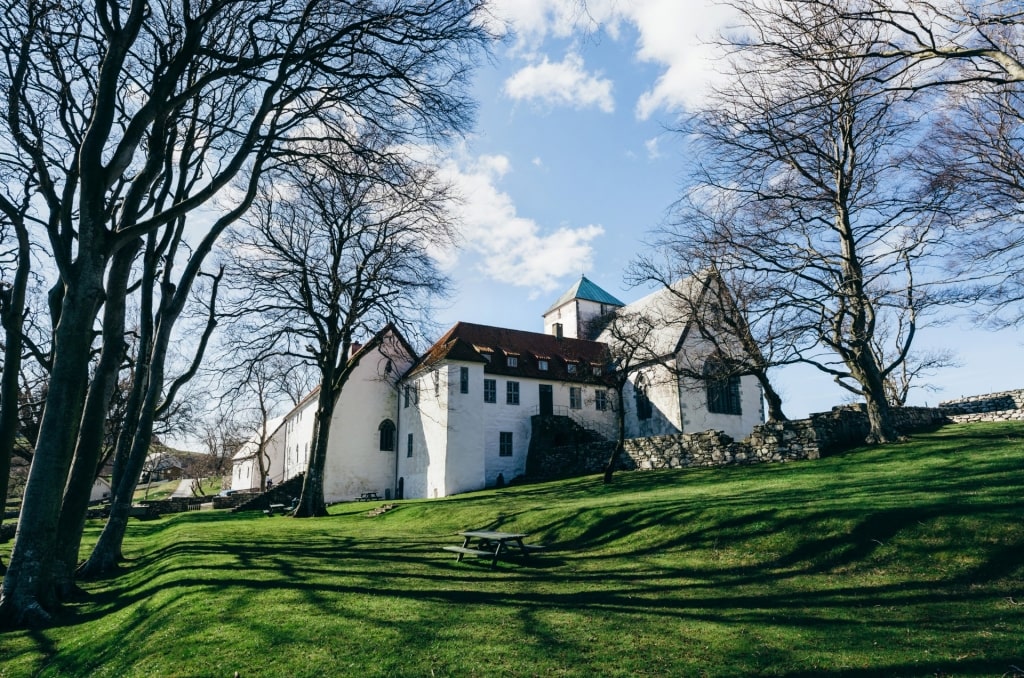
Utstein Monastery
The drive to Utstein Monastery is beautiful. Capture moments of the journey on camera before exploring the monastery-turned-museum, nestled among rolling emerald hills dotted with grazing farm animals.
Enjoy a Boat Ride to Lysefjord

Lysefjord
One of the best things to do in Stavanger is to join a boat ride to the tantalizing Lysefjord, Norway’s southernmost fjord.

Hengjanefossen waterfall
A 26-mile strip of water carved into the Norwegian mountains, Lysefjord is surrounded by dense, green pine forests. Look out for the jaw-dropping Preikestolen (Pulpit Rock) and beautiful Hengjanefossen waterfall, which nosedives 1,300 feet into the Lysefjord.
A network of hiking routes lines Lysefjord. Visitors can also canoe and kayak on the inky waters.
Food & Drink

Gravlax
Stavanger’s gastronomy celebrates both Nordic traditions and modern cuisine with waffles, open sandwiches, rye bread, and local cheeses among the dishes and delicacies.
Fresh produce includes delicious shellfish and seafood, locally-grown and picked herbs, vegetables, and mushrooms, as well as wild game and locally-farmed lamb.
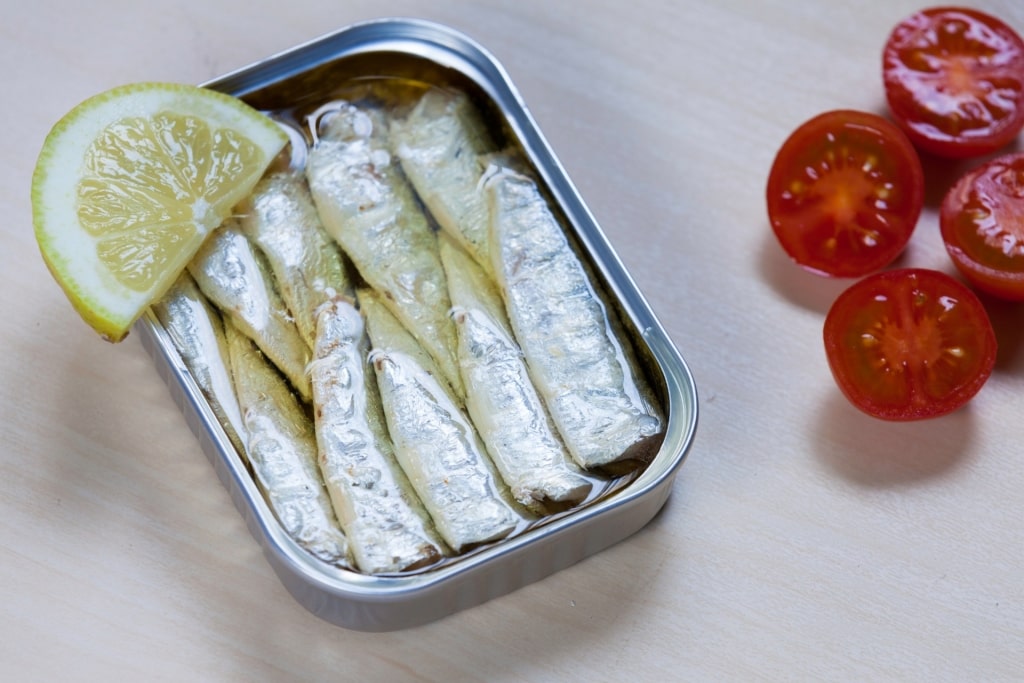
Canned fish
Canned fish remains hugely popular. For a selection of the city’s best sardines, visit the Norwegian Canning Museum to pick up colorful tins; these can make an unusual gift to take home.
One of the best places to soak up the Norwegian food culture is at Fisketorget, the city’s fantastic fish market, with an adjoining restaurant.
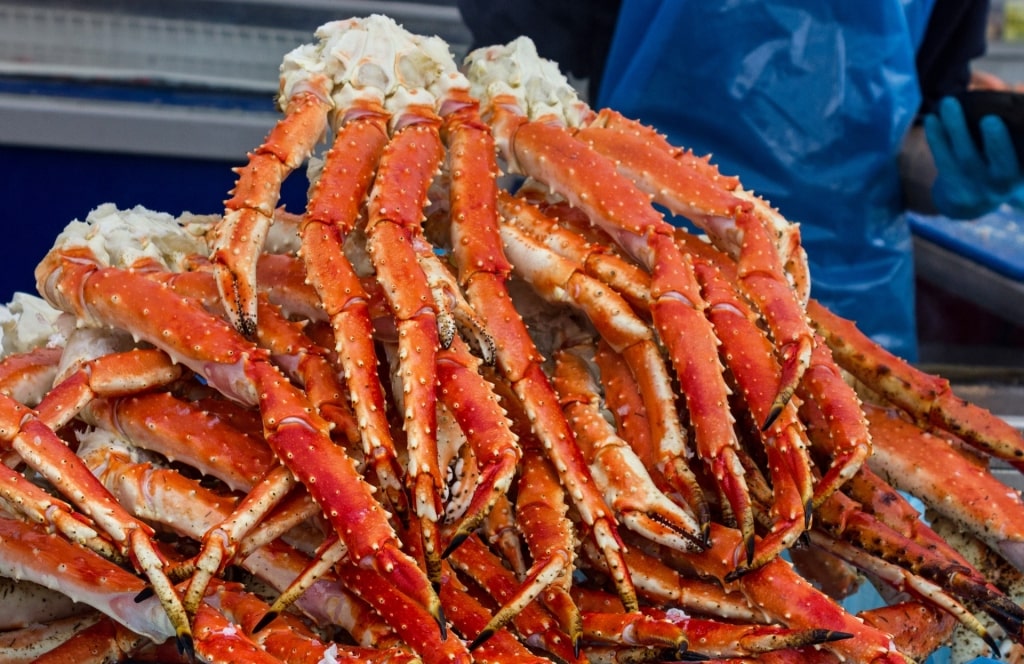
Norwegian king crab
Stop by the market to gaze at the tasty seafood on offer before ordering a shrimp sandwich and fish soup at the restaurant. Seasonal dishes include briny oysters, sweet Norwegian king crab, and steamed mussels with a fragrant green curry.
Another great spot is Eg & Du on Eiganesveien for dill-flavored gravlax with rye bread, baked hake, and braised rack of lamb with seasonal local vegetables.
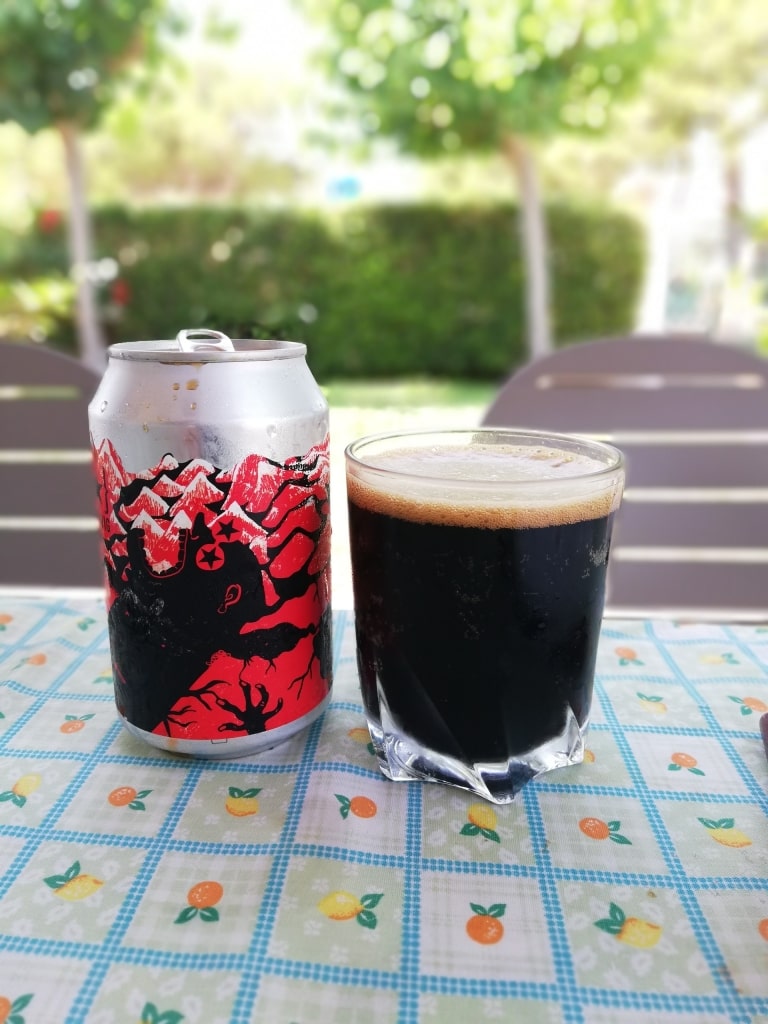
Lervig Photo by Josep Trepat Font on Flickr, licensed under CC BY-SA 2.0
When it comes to drinks, coffee shops have popped up all over the city serving tasty bean-to-cup brews. For craft beers, sip on a pint at Lervig, an independently-owned brewery with a tap room in south Stavanger.
Best Time to Visit Stavanger
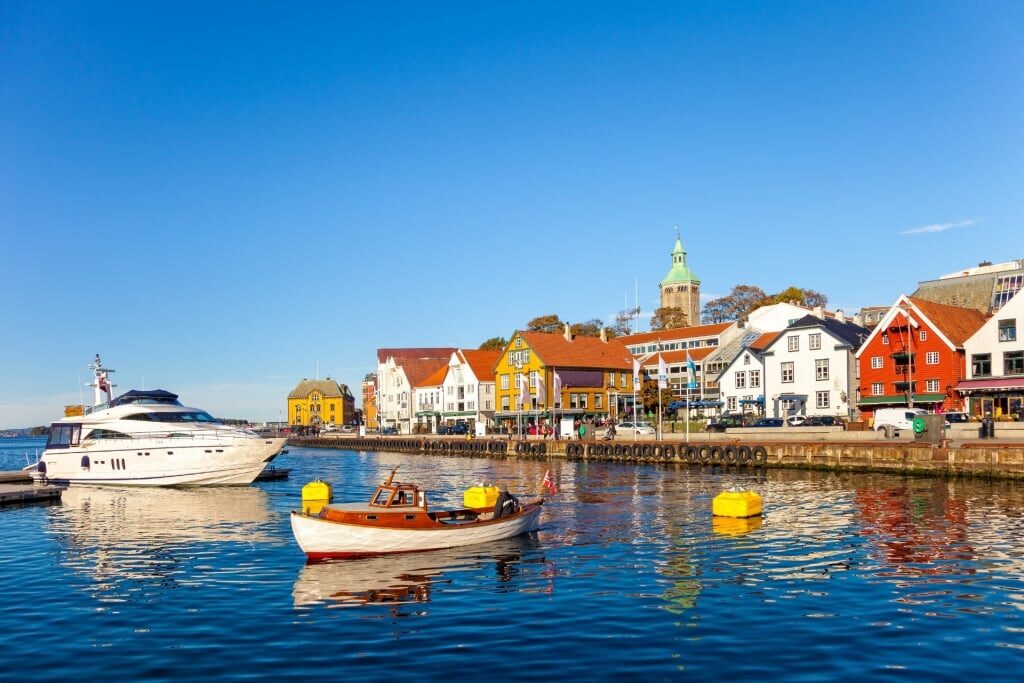
Stavanger
The best time to visit Stavanger is summertime. Arrive between May and September and you’ll see (and hear) roaring Norwegian waterfalls cascading down the side of mountains. There might also be some snow still melting away at the top of the highest peaks outside of Stavanger.
The town enjoys a relatively mild climate, with July and August typically the warmest months. In summer, the sandy beaches are lovely for walks, swimming, and sunbathing, and around the solstice, the sun barely sets.
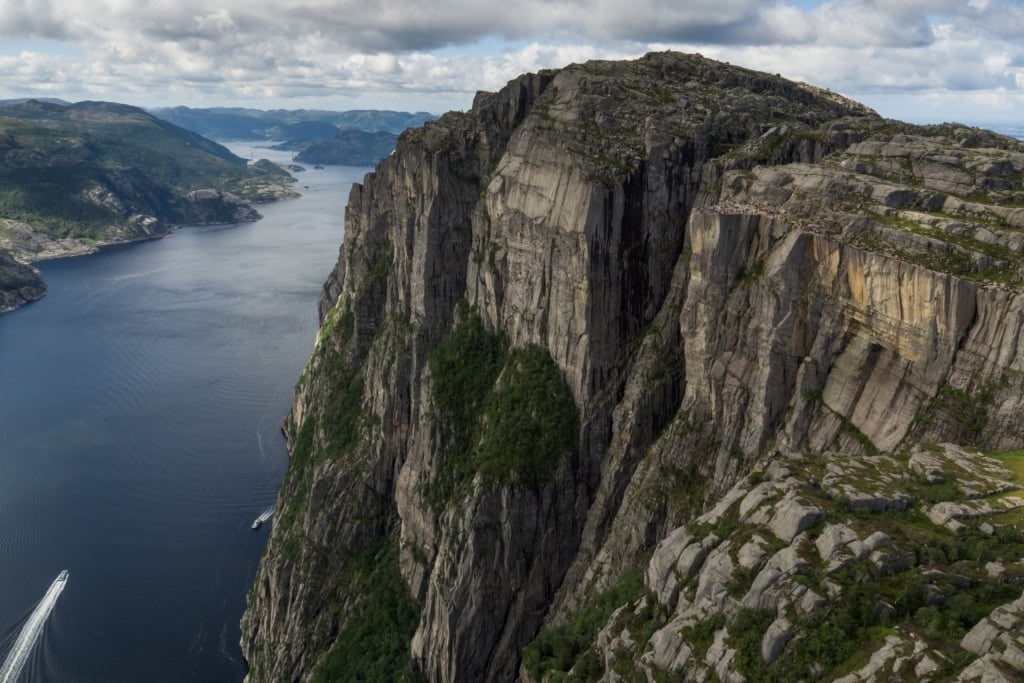
Preikestolen/Pulpit Rock
Discover the charming and compact city of Stavanger, cradled between a windswept coast and pristine mountains, on one of Celebrity’s cruises vacations. Browse Stavanger cruises and plan your Nordic adventure.
